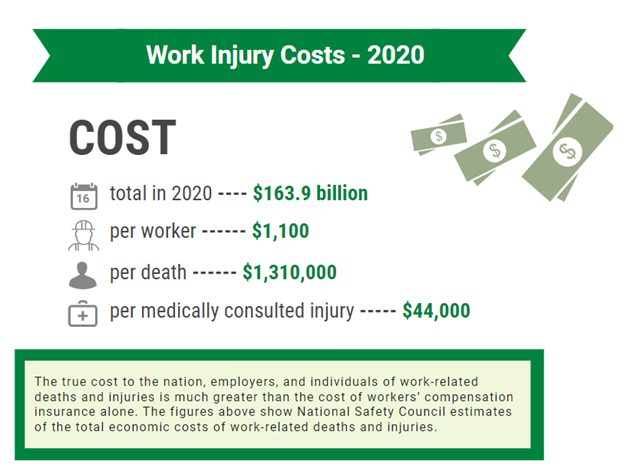Safe + Sound Week is here: an annual dedication to reviewing workplace health and safety measures conducted by the Occupational Safety and Health Administration (OSHA).
Today, we’ll cover the basics including:
- What Safe + Sound Week is
- Why businesses should participate
- How to create a workplace health and safety plan
What is OSHA’s Safe + Sound Week?
Safe + Sound Week is an OSHA safety initiative that takes place annually in August. During this week, workplaces are challenged to collaborate on new ideas to address occupational safety and health hazards specific to their industry.
While Safe + Sound is a campaign OSHA promotes year-round, Safe + Sound week presents a specific opportunity for workplaces to both evaluate and celebrate their workplace health and safety efforts.
Why Should Businesses Participate?
Initiatives such as Safe + Sound Week encourage businesses to be proactive about their workplace safety measures. When businesses set concrete health and safety plans in place, they mitigate potential risks and create a safer environment for their employees.
This not only makes your business a better place to work, but it also has a tremendous impact on your bottom line: According to the National Safety Council (NSC), employers spent an average of $44,000 per workplace injury in 2022. Plus, the NSC predicts the actual number is much greater than this.

How to Create a Workplace Health and Safety Plan
If your business lacks a concrete health and safety program, or if it hasn’t been reviewed recently, OSHA’s Safe + Sound Week offers you the perfect opportunity to do so. Here are some tips for creating and reviewing policies on well-being in your workplace.
1. Identify Areas of Possible Risk
Cutting down on incidences of workplace injury begins with hazard identification. Begin by walking through your workplace and spotting any obvious risks or areas of concern.
Then, take a look at the processes and procedures that employees in each role perform and identify the job functions that have a potential for injury.
It’s a good idea to speak with your employees directly about this: They are the most likely to notice any potential risks associated with their job functions. Collaborating with the members of your team is the best place to start finding and fixing hazards in your workplace.
2. Research the Safety Standards Specific to Your Industry
OSHA sets standards for each industry specifically based on their common risks and hazards, so it’s a good idea to spend some time researching these and incorporating them into your workplace safety policies.
These standards are frequently updated, and Safe + Sound Week is the ideal opportunity to review OSHA’s industry guidelines and make note of any areas for improvement in your health and safety program.
3. Put Your Plan in Writing
Ensure that the standards you define for your workplace safety plan are memorialized in writing. Doing so makes them enforceable and lasting and provides a point of reference that employees can utilize year-round.
Also, set a written schedule for ongoing training and evaluations: Doing so will ensure that you maintain workplace safety culture year-round.
4. Spread the Word
Communication with your employees is key to making your workplace health and safety initiatives effective.
Hold formal all-hands meetings to go over any new safety rules or policy changes as well as informal discussions surrounding your organization’s commitment to safety.
Final Thoughts
OSHA’s Safe + Sound Week is a great reminder to evaluate safety practices and the perfect opportunity to create, strengthen, and update your company-wide policies and practices.
And while you can do a lot to try to prevent workplace accidents, it’s impossible to guarantee that they won’t ever occur: You still need to ensure that you are fully protected for incidences of occupational injury.
That’s why partnering with a PEO is hugely beneficial: both for your business and your workforce.
Here at FrankCrum, our risk management experts can help you navigate things like workers’ compensation and risk mitigation. Safety is our top priority, but beyond that, our services include payroll processing services, HR guidance, a broad range of benefits, and more.
Contact us today to learn how FrankCrum can help with your business’ success.




